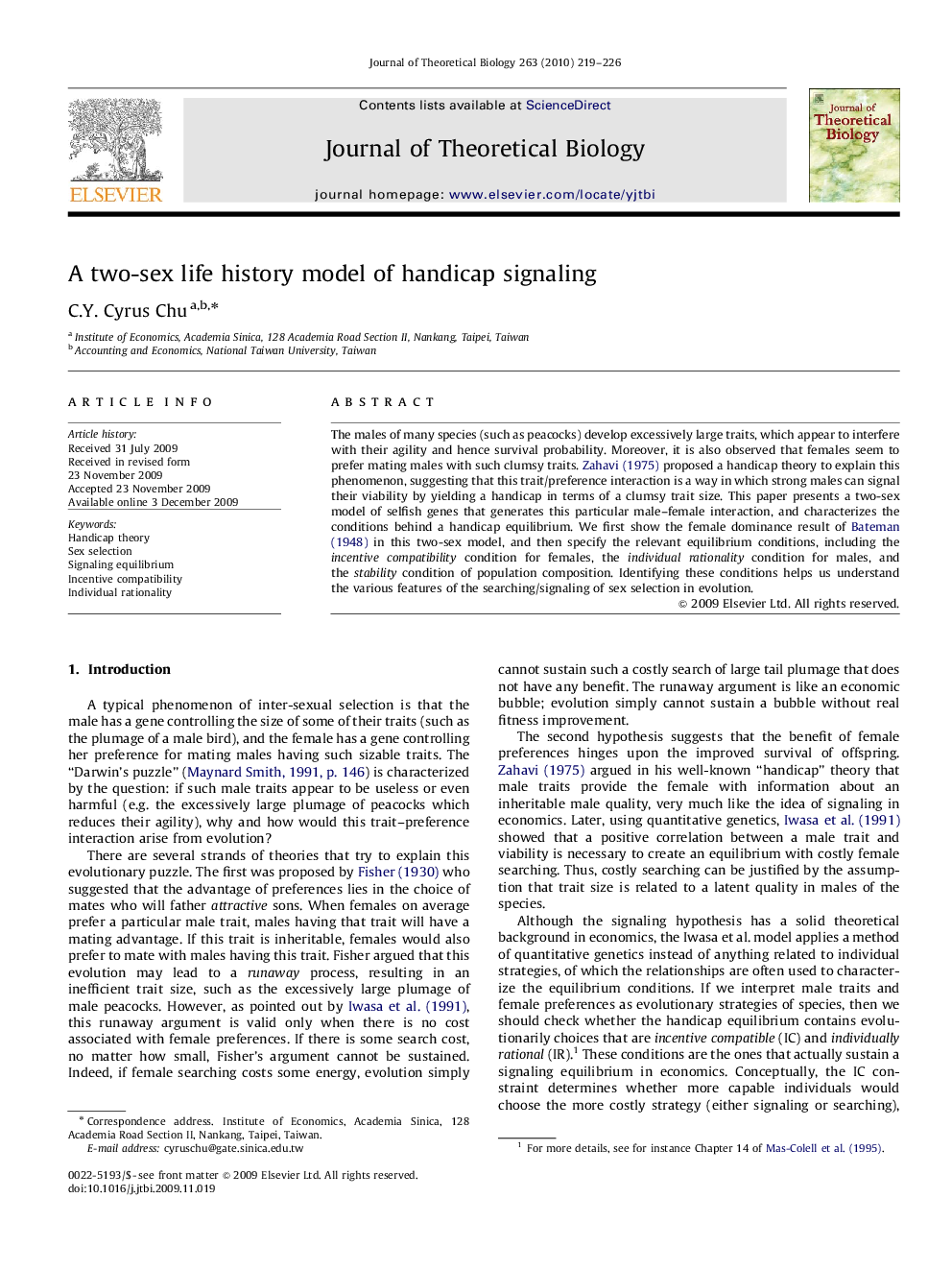| کد مقاله | کد نشریه | سال انتشار | مقاله انگلیسی | نسخه تمام متن |
|---|---|---|---|---|
| 4497580 | 1318942 | 2010 | 8 صفحه PDF | دانلود رایگان |

The males of many species (such as peacocks) develop excessively large traits, which appear to interfere with their agility and hence survival probability. Moreover, it is also observed that females seem to prefer mating males with such clumsy traits. Zahavi (1975) proposed a handicap theory to explain this phenomenon, suggesting that this trait/preference interaction is a way in which strong males can signal their viability by yielding a handicap in terms of a clumsy trait size. This paper presents a two-sex model of selfish genes that generates this particular male–female interaction, and characterizes the conditions behind a handicap equilibrium. We first show the female dominance result of Bateman (1948) in this two-sex model, and then specify the relevant equilibrium conditions, including the incentive compatibility condition for females, the individual rationality condition for males, and the stability condition of population composition. Identifying these conditions helps us understand the various features of the searching/signaling of sex selection in evolution.
Journal: Journal of Theoretical Biology - Volume 263, Issue 2, 21 March 2010, Pages 219–226